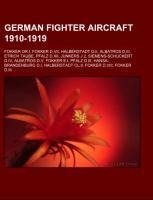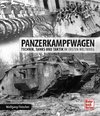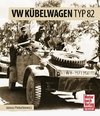
-
 Anglický jazyk
Anglický jazyk
German fighter aircraft 1910-1919
Autor: Source: Wikipedia
Source: Wikipedia. Pages: 53. Chapters: Fokker Dr.I, Fokker D.VII, Halberstadt D.II, Albatros D.III, Etrich Taube, Pfalz D.XII, Junkers J 2, Siemens-Schuckert D.IV, Albatros D.V, Fokker E.I, Pfalz D.III, Hansa-Brandenburg D.I, Halberstadt CL.II, Fokker D.VIII,... Viac o knihe
Na objednávku, dodanie 2-4 týždne
16.65 €
bežná cena: 18.50 €
O knihe
Source: Wikipedia. Pages: 53. Chapters: Fokker Dr.I, Fokker D.VII, Halberstadt D.II, Albatros D.III, Etrich Taube, Pfalz D.XII, Junkers J 2, Siemens-Schuckert D.IV, Albatros D.V, Fokker E.I, Pfalz D.III, Hansa-Brandenburg D.I, Halberstadt CL.II, Fokker D.VIII, Fokker D.III, Hansa-Brandenburg CC, Hansa-Brandenburg W.19, Fokker E.III, LFG Roland D.VI, Rumpler 6B, LFG Roland D.II, Fokker E.IV, Fokker V.6, Kaiserliche Werft Wilhelmshaven 945, Pfalz D.VIII, Hannover CL.II, LFG Roland D.III, Hansa-Brandenburg W.12, Siemens-Schuckert D.III, Hansa-Brandenburg W.27, Hansa-Brandenburg W.29, Daimler D.I, Friedrichshafen FF.43, Junkers D.I, Hannover CL.IV, AEG D.I, AEG Dr.I, Albatros W.4, Daimler L11, Albatros D.XI, LFG Roland C.II, Daimler L14, Hansa-Brandenburg W.11, Albatros D.IV, Fokker D.IV, Friedrichshafen FF.48, Hansa-Brandenburg KDW, Albatros Dr.II, Aviatik D.III, Albatros D.XII, AGO DV.3, Siemens-Schuckert E.I, Euler D.I, Pfalz Dr.I, Euler D.II, Schütte-Lanz D.IV, Schütte-Lanz D.III, Fokker F.I, Fokker V.4, LVG E.I, Fokker V.7, Fokker V.2, Fokker V.17, Albatros D.IX, Albatros D.VII, Fokker V.27, Fokker V.9, Alter A.1, Fokker M.16. Excerpt: The Fokker D.VII was a German World War I fighter aircraft designed by Reinhold Platz of the Fokker-Flugzeugwerke. Germany produced around 3,300 D.VII aircraft in the summer and autumn of 1918. In service, the D.VII quickly proved itself to be a formidable aircraft. The Armistice ending the war specifically required Germany to surrender all D.VIIs to the Allies at the conclusion of hostilities. Surviving aircraft saw continued widespread service with many other countries in the years after World War I. Fokker D.VII Fokker D.VII(F)Fokker's chief designer, Reinhold Platz, had been working on a series of experimental planes, the V-series, since 1916. These planes were characterized by the use of cantilever wings, first developed during Fokker's government-mandated collaboration with Hugo Junkers. Junkers had originated the idea in 1915 with the first all-metal aircraft, the Junkers J 1, nicknamed Blechesel ("Sheet Metal Donkey" or "Tin Donkey"). The resulting wings were thick, with a rounded leading edge. This gave greater lift and more docile stalling behavior than conventional thin wings. Late in 1917, Fokker built the experimental V 11 biplane, fitted with the standard Mercedes D.IIIa engine. In January 1918, Idflieg held a fighter competition at Adlershof. For the first time, frontline pilots would directly participate in the evaluation and selection of new fighters. Fokker submitted the V 11 along with several other prototypes. Manfred von Richthofen flew the V 11 and found it tricky, unpleasant, and directionally unstable in a dive. In response to these complaints, Reinhold Platz lengthened the rear fuselage by one structural bay, and added a triangular fixed vertical fin in front of the rudder. Upon flying the modified V 11, Richthofen praised it as the best aircraft of the competition. It offered excellent performance from the outdated Mercedes engine, yet it was safe and easy to fly. Richthofen's recommendation virtually decided the competition, but he was not
- Vydavateľstvo: Books LLC, Reference Series
- Rok vydania: 2013
- Formát: Paperback
- Rozmer: 246 x 189 mm
- Jazyk: Anglický jazyk
- ISBN: 9781155554945

 Nemecký jazyk
Nemecký jazyk 









